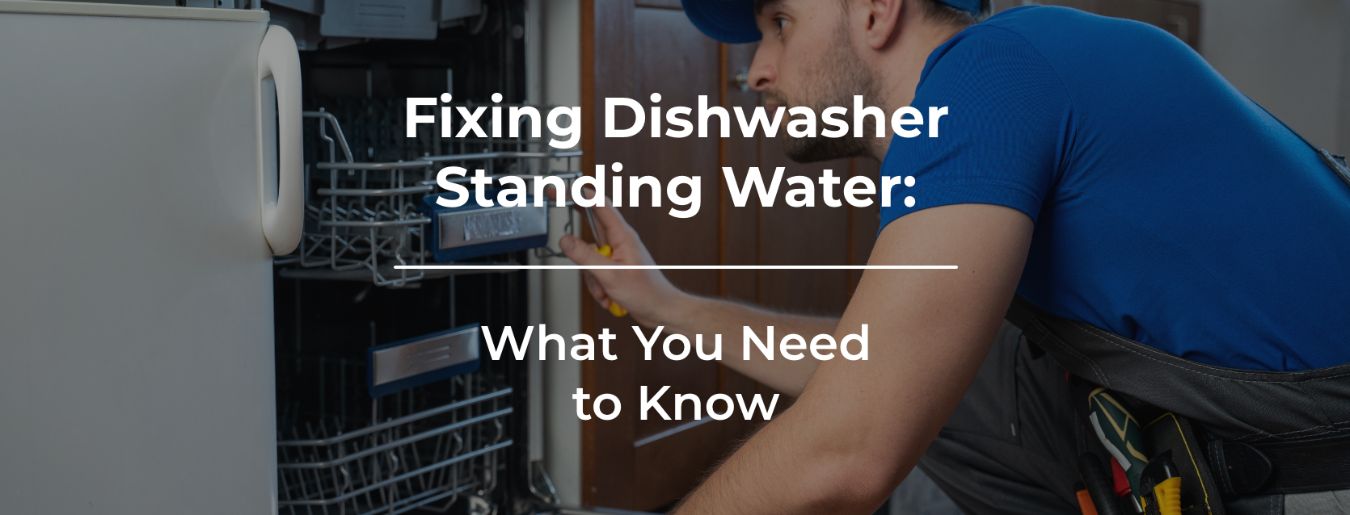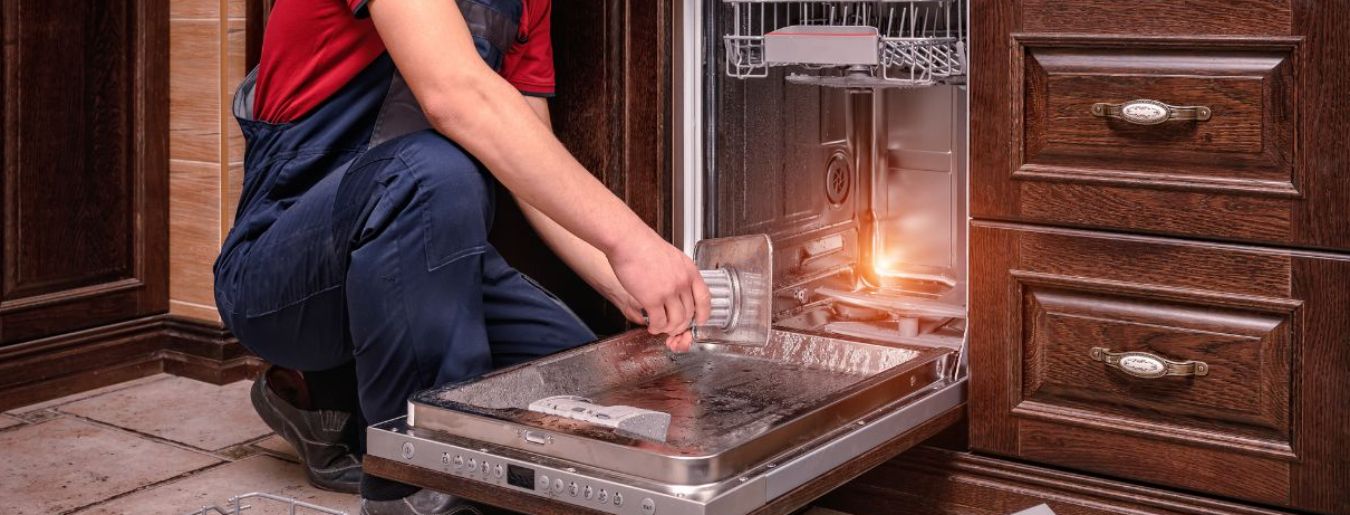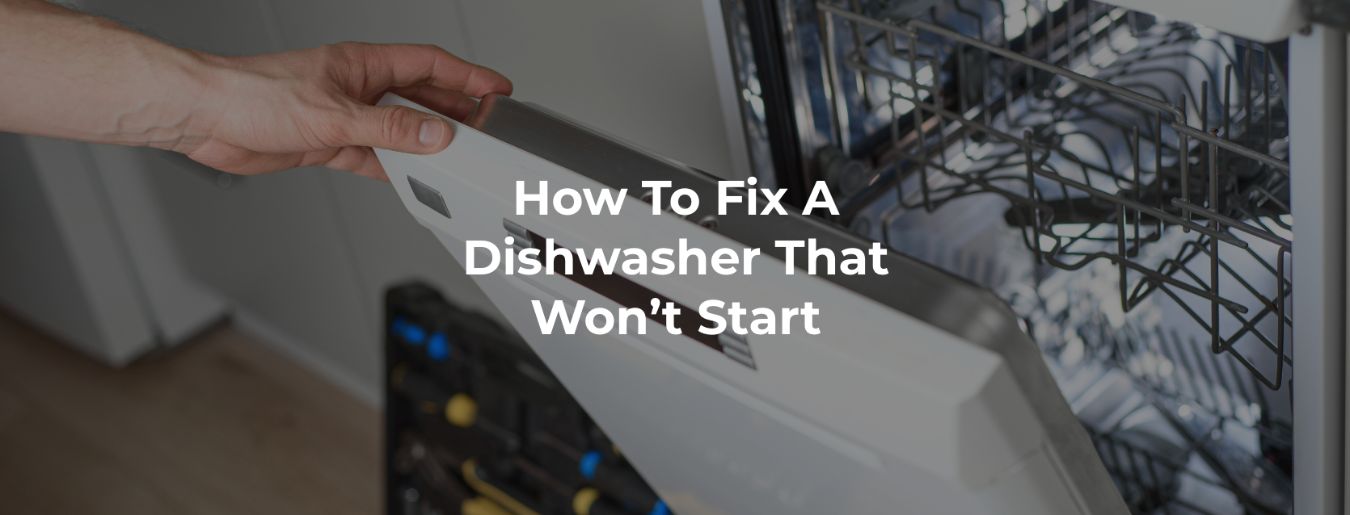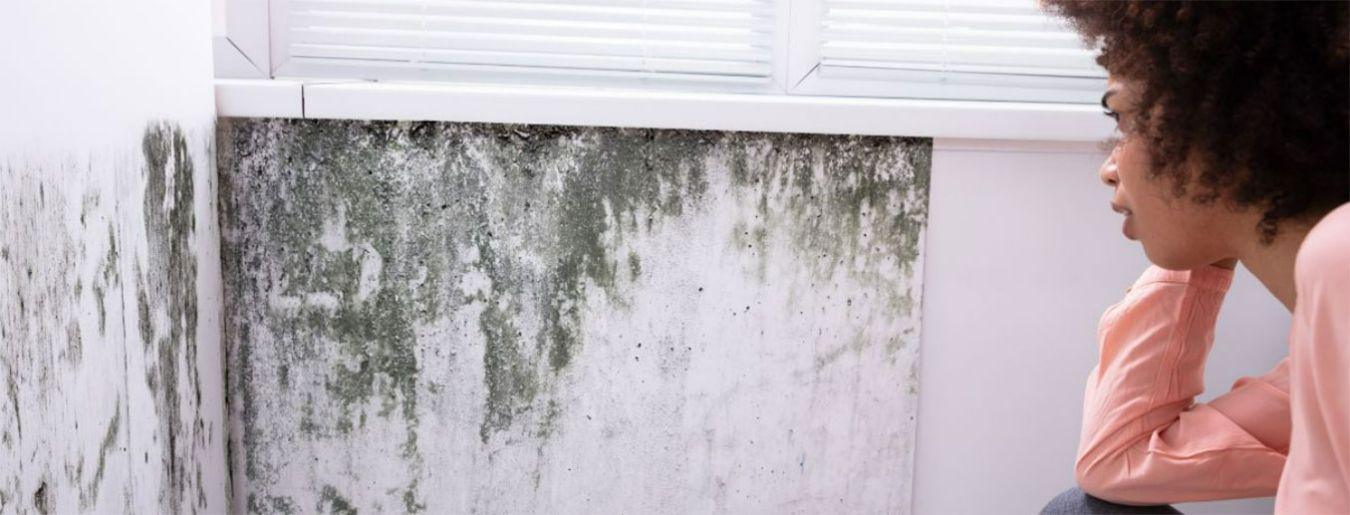A dishwasher is a convenient and time-saving appliance that many of us rely on to handle our daily dishwashing needs. However, encountering standing water in the dishwasher can quickly become frustrating. Not only does it prevent you from using the dishwasher effectively, but it can also lead to unpleasant odors and potential damage to your appliance.
In this article, we'll provide you with step-by-step instructions on troubleshooting and resolving this issue, ensuring your dishwasher works efficiently again. So let's dive in and restore your dishwasher to its pristine functioning state!

Get Home Warranty Quotes
from Top Rated Authorized
Partners
Get a Quote
Dishwasher Troubleshooting Steps
Check for Clogs in the Drainage System
The first step in resolving the standing water problem in your dishwasher is to inspect the drainage system for any clogs. Over time, food particles, debris, and mineral deposits can accumulate and obstruct the dishwasher's drainage components. Follow these steps to clear any clogs:
-
Disconnect the Power: For safety reasons, begin by turning off the dishwasher and unplugging it from the electrical outlet.
-
Access the Filter Assembly: Remove the lower rack from the dishwasher and locate the filter assembly at the bottom. Most dishwashers have a removable cylindrical filter and a flat filter underneath.
-
Clean the Filters: Take out the filters and rinse them under warm water to remove any debris or gunk. If the filters are heavily soiled, soak them in warm soapy water and gently scrub them with a brush to dislodge any stubborn particles.
-
Inspect the Drain Valve: While the filters are removed, check the drain valve, usually located near the back of the dishwasher. Ensure it moves freely and is not blocked by any foreign objects.
-
Clear the Drain Hose: Trace the drain hose from the dishwasher to the sink drain or garbage disposal. Detach it carefully and check for clogs or kinks. If you find any, use a long, flexible brush or a pipe cleaner to clear the obstruction.
Verify Proper Installation of the Dishwasher
Sometimes, standing water issues can arise due to incorrect dishwasher installation. To ensure your dishwasher is installed correctly, consider the following:
-
Leveling: Confirm that your dishwasher is properly leveled. Use a carpenter's level and adjust the feet at the bottom of the dishwasher if necessary.
-
Check the Drain Hose: Inspect the drain hose for any bends or kinks that might impede proper drainage. Ensure it is routed correctly and securely connected to the sink drain or garbage disposal.
-
Air Gap (if applicable): If your dishwasher is equipped with an air gap, inspect it to ensure it is not clogged or obstructed. Cleaning the air gap can often resolve standing water issues.
Examine the Dishwasher Pump and Motor
The dishwasher's pump and motor are crucial in the drainage process. If they are not functioning correctly, it can result in standing water. Follow these steps to examine and troubleshoot the pump and motor:
-
Locate the Pump: The dishwasher's pump is typically located at the bottom and can be accessed by removing the lower panel or kick plate.
-
Inspect the Pump: Check the pump for any visible damage, such as cracks or leaks. Additionally, ensure that the pump impeller is free of debris and can rotate without obstruction.
-
Test the Motor: Run a brief dishwasher cycle and listen for any unusual noises coming from the motor. If you notice grinding or screeching sounds, it may indicate a faulty motor that needs to be replaced.
Ensure Proper Water Inlet and Drainage
Inadequate water inlet and drainage can also contribute to standing water issues. Here's what you can do to verify and optimize these aspects:
-
Water Supply: Ensure that the water supply valve connected to your dishwasher is fully open and providing an adequate water flow. Low water pressure can hinder proper drainage.
-
Check the Drain Air Gap: If you have a drain air gap installed, clean it thoroughly to prevent any potential blockages. Refer to the manufacturer's instructions for the proper cleaning procedure.
Seek Professional Assistance
If you've followed the troubleshooting steps outlined above and are still experiencing standing water in your dishwasher, it may be time to seek professional help. Contacting a certified dishwasher technician is highly recommended for more advanced repairs and diagnosis. These professionals have the expertise to identify complex issues and provide the most appropriate solutions. They may perform the following:
-
Diagnostic Testing: A technician will conduct thorough testing to pinpoint the exact cause of the standing water problem. They have specialized tools and equipment to assess the dishwasher's components and identify any malfunctioning parts.
-
Replacement of Faulty Parts: In some cases, the standing water issue may be attributed to damaged or worn-out components within the dishwasher. The technician will identify and replace any faulty parts, such as pumps, motors, valves, or sensors.
-
Repair or Replacement Recommendations: If your dishwasher is significantly old or has major issues, the technician may recommend repairing or replacing it entirely. They can provide valuable advice on the most cost effective and efficient solution based on your specific circumstances.
Tips to Prevent Standing Water in Your Dishwasher
In addition to the troubleshooting steps outlined above, you can take several preventive measures to minimize the chances of encountering standing water in your dishwasher. Implementing these tips can help maintain the optimal performance of your dishwasher and reduce the likelihood of future issues:
-
Scrape Food Residue: Before loading your dishes into the dishwasher, make sure to scrape off excess food particles. Large food debris can clog the filters and hinder proper drainage. It's also advisable to rinse heavily soiled dishes to prevent the accumulation of debris during the wash cycle.
-
Use the Right Dishwasher Detergent: Select a high-quality dishwasher detergent that is suitable for your water hardness level. Using the wrong detergent can result in excessive suds or residue buildup, which can affect drainage. Refer to the manufacturer's guidelines or consult a dishwasher specialist to determine the best detergent for your specific needs.
-
Regularly Clean the Dishwasher: Perform regular maintenance by cleaning your dishwasher at least once a month. Remove the filters and clean them thoroughly using warm, soapy water. Wipe down the interior of the dishwasher, including the door gasket, spray arms, and the detergent dispenser. This practice prevents the accumulation of debris and ensures proper water flow.
-
Avoid Overloading: Properly arrange your dishes in the dishwasher, ensuring there is enough space between them for water and detergent to circulate freely. Overloading the dishwasher can obstruct the spray arms and impede effective cleaning and drainage.
-
Maintain Water Pressure: If you notice low water pressure in your dishwasher, it's essential to address it promptly. Low water pressure can lead to insufficient water flow and hinder proper drainage. Consult a plumber to inspect your water supply and make any necessary adjustments or repairs.
By incorporating these preventive measures into your dishwasher routine, you can minimize the occurrence of standing water and maintain the optimal functioning of your appliance.

Let us find the
Best Home Warranty Provider
for your Home's Needs
The Importance of Regular Dishwasher Maintenance
Maintaining your dishwasher ensures its long-term performance and prevents standing water issues. Regular maintenance not only helps you avoid costly repairs but also extends the lifespan of your appliance. Remember to clean the spray arms, inspect the gasket, descale the dishwasher, check and clean the filters, run vinegar cycles, and maintain proper loading techniques.
Standing water in your dishwasher can be frustrating, but with some basic troubleshooting steps, you can often resolve the issue on your own.
However, if you need help fixing the problem or if you need clarification on performing the necessary tasks, it's always wise to seek professional help. A qualified technician can diagnose and resolve more complex issues, ensuring that your dishwasher functions efficiently.



 Prev Post
Prev Post







